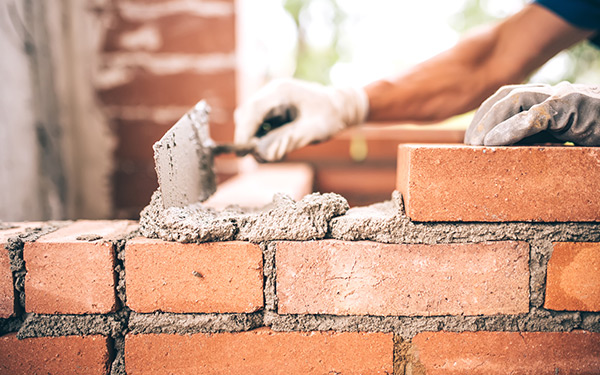Specialist Siding Contractor Services to Increase Visual Charm
Specialist Siding Contractor Services to Increase Visual Charm
Blog Article
Unlocking the Tricks of Lasting Masonry Construction Practices for Eco-Friendly Buildings
Amongst the myriad approaches to environment-friendly structure, sustainable masonry building and construction stands out as a time-tested and long lasting approach that holds a wealth of untapped capacity. From the selection of materials to innovative building strategies, the secrets to accomplishing sustainability within stonework construction are diverse and intriguing.
Advantages of Lasting Stonework Building
Welcoming lasting stonework building practices not just minimizes environmental impact yet likewise provides long-term financial benefits to contractors and communities. By making use of products like recycled bricks, blocks, and stones, contractors can substantially reduce the carbon impact of their jobs while advertising resource efficiency. Furthermore, sustainable stonework construction methods, such as correct insulation and thermal mass homes, can enhance power effectiveness within buildings, causing lowered functional expenses over time.
In addition, the longevity and durability of masonry structures add to long-lasting economic advantages. Buildings built using sustainable stonework practices usually require much less upkeep and repair work, converting to cost savings for builders and homeowner. The durability of stonework materials likewise makes certain that structures stay steady and secure, lowering the need for regular remodellings or substitutes.
Eco-Friendly Masonry Products
Making use of eco-friendly stonework products is a critical action towards enhancing the sustainability of construction techniques and decreasing environmental impact while optimizing long-lasting economic benefits. Sustainable stonework materials are sourced, generated, and used in a manner that lowers general environmental influence. Sustainable concrete obstructs integrate recycled aggregates and might feature better insulation residential properties, contributing to power effectiveness in structures.
Moreover, all-natural materials like adobe, rammed planet, and straw bales give exceptional thermal mass residential or commercial properties, lowering the requirement for home heating and cooling power. These materials are commonly in your area available, promoting local economic climates and lowering transportation-related carbon discharges. By picking environmentally friendly stonework materials, building tasks can substantially reduce their environmental impact and add to the development of much healthier, much more lasting built atmospheres.
Energy-Efficient Stonework Strategies
Energy effectiveness plays an important role in improving the sustainability of stonework construction methods. By applying energy-efficient masonry methods, building contractors can significantly minimize the overall energy usage of a structure, resulting in lower functional costs and a smaller ecological impact. One essential energy-efficient stonework strategy is making use of thermal mass, which includes including dense products like concrete or block into the building's framework to take in and save heat. This assists regulate interior temperature levels, decreasing the demand for mechanical home heating and cooling systems.

Advancements in Sustainable Stonework
Current developments in lasting masonry techniques have produced cutting-edge methods that are improving the construction market. One such technology is the development of self-healing concrete, which makes use of bacteria embedded within the concrete to recover cracks autonomously. This development not just reduces upkeep costs however additionally enhances the toughness of stonework structures, adding to their sustainability.
An additional notable advancement is the use of recycled aggregates in stonework building and construction - masonry contractor. By incorporating materials such as crushed ceramic waste or recycled glass right into concrete blends, contractors can minimize the ecological impact of building tasks while maintaining structural honesty. This practice not only draws away waste from land fills yet also saves natural resources, making it an essential innovation in lasting stonework construction
Furthermore, the integration of digital design tools, such as Structure Details Modeling (BIM), is revolutionizing the way stonework frameworks are intended and created. BIM enables even more exact computations, decreased material wastage, and improved power performance, inevitably causing more sustainable building techniques. These technologies jointly symbolize an appealing future for sustainable stonework building and construction in the age of green structures.
Future Trends in Masonry Sustainability
With the innovative strides made in lasting masonry practices, the future fads in textured concrete around pool stonework sustainability are poised to further change the building industry. Among the crucial patterns shaping the future of stonework sustainability is the boosted combination of technology. Advancements such as Structure Info Modeling (BIM) and virtual fact simulations are being used to optimize stonework building processes, go now leading to lowered product waste and enhanced energy efficiency in buildings.
Furthermore, the development of novel lasting materials is readied to play a considerable duty in improving the eco-friendliness of stonework building. masonry contractor. Innovations like self-healing concrete, recycled accumulations, and bio-based binders are gaining traction for their capacity to reduce ecological impact while preserving architectural honesty

Conclusion
In verdict, lasting masonry construction techniques use many benefits for eco-friendly structures. masonry contractor. Advancements in sustainable stonework are constantly being developed to better improve the environmental efficiency of buildings.
Report this page